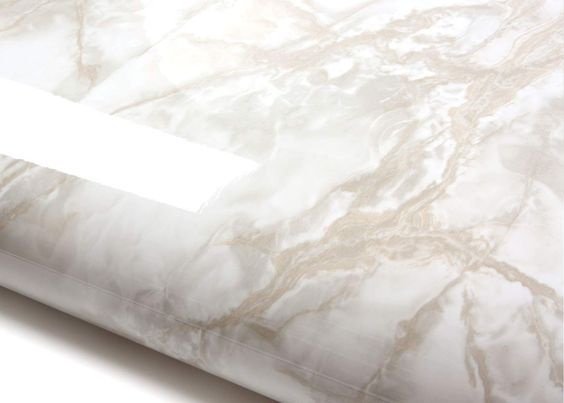Is Polyvinyl Chloride Same As PVC?
PVC is a common and versatile material used in construction, electronics, and other industries. Its low cost, desirable physical properties and flame resistance make it an attractive choice for a wide range of products.
It can be made flexible, softer and amenable to bending with the addition of plasticizers like phthalates. Unfortunately, phthalates can have negative health impacts when they’re exposed to air and water.

Source: https://i.pinimg.com
What is PVC?
PVC, or polyvinyl chloride, is a common plastic that is used in a wide variety of different applications. It is a strong, synthetic plastic that has many unique properties that make it useful in a number of different industries.
In addition to being lightweight and durable, PVC is also resistant to fire, chemicals, and corrosion. This makes it a popular choice for many types of building materials and appliances.
However, there are a number of concerns about the environmental and health impacts of PVC. The biggest concern is that this plastic contains dangerous toxins, including dioxin and phthalates. These toxic substances can build up in the environment and harm human health, causing everything from cancer and fetal developmental setbacks to asthma and endocrine disruption.
This is particularly true of PVC that has been manufactured using toxic additives. These additives are added to the raw material before it is molded or extruded into a product.
Some of these additives can wash away and be lost to the air, while others are absorbed into the finished product. This can lead to a chemical "fogging" effect.
Another concern is that the chlorine-based chemicals that are used to make PVC create dioxin and dioxin-like compounds that end up in the air. This can lead to a significant amount of pollution in areas where these chemicals are produced, burned, and used.
Moreover, these pollutants can migrate across the world and cause harm in places that do not have access to proper cleanup. This is particularly the case when PVC is recycled and used in the production of new products.
It's important to note that even after recycling, PVC can still contain high levels of chemicals. This is why it's important to look for companies that use eco-friendly practices when purchasing PVC products.
What is the difference between PVC and other plastics?
PVC is a common material that is used for a wide range of products, including pipes, cables, roofing sheets, and packaging foils. Its properties are excellent and it is also fairly easy to manufacture. However, it has some drawbacks and it is not recommended for outdoor use as it can release toxic chlorine fumes when burned.
PVC, like most plastics, is a thermoplastic polymer that is formed when it is heated until it melts into a liquid. It has a variety of different additives that can change its characteristics, including flame retardants and heat stabilizers.
Depending on the additives, PVC can be made into many different products. These products can be made by a number of processes, including blow molding, injection molding and compression molding.
It has an excellent strength-to-weight ratio, which makes it an ideal material for many applications. It is also easy to bonded, welded, machined, bent and shaped and can be made in a variety of colors and textures.
In addition, PVC can be recycled into new products. This can help the environment as it uses less energy to produce than other plastics.
Another key feature of PVC resin is that it is fire resistant, meaning it will not ignite if it comes into contact with heat or flame. It also has excellent insulating properties and can be used in temperatures of up to 60 without melting.
Although PVC is a great material to use, it can be dangerous if it is not properly manufactured. During the production process, it is important to control the porosity of the particles so that the plasticizers don't get absorbed into them.
This helps to prevent the polymer from degrading at a lower temperature and releasing toxic chlorine fumes when it is exposed to light. The gases can be extremely dangerous and can trap people inside buildings.
In addition to the environmental problems associated with using PVC, the chemicals produced during its production and disposal can cause health problems. The chemicals in PVC can also lead to severe cancers and immune system damage. As a result, PVC is being phased out in many countries around the world.

Source: https://i.pinimg.com
How is PVC made?
PVC is manufactured from raw materials that are available in abundance from the world around us. The two basic raw materials are ethylene and chlorine, which are obtained from oil and salt, respectively. Chlorine is produced from electrolysis of salt and ethylene is made from the process of chemical conversion of crude oil.
When a combination of these chemicals is added to each other, they form an intermediate chemical called EDC (ethylene dichloride). This is then converted at high temperatures into the polymer, or vinyl chloride monomer, that is then used in the production of PVC.
Once the initial chemical has been transformed, PVC can then be combined with various additives that will help it in achieving certain properties, namely; mechanical and weather fastness, colour and clarity. Some of these additives are optional and some are necessary for the integrity of the finished product.
The addition of plasticizers makes flexible PVC such as that used in flooring & medical products softer and more elastic. They also enhance the mechanical strength and impact resistance of the material.
There are many different kinds of plasticisers that can be used to make a variety of zhongtai pvc products. Some of the most common include phthalates, but there are other non-phthalate plasticisers such as adipates, citrates, benzoates and trimeliltates which can also be used to give PVC flexibility.
In order to produce PVC, the raw materials have to be carefully combined and dissolved together in the right proportions to ensure that the final material is stable. This is done in a series of processes called compounding and the end result is a highly versatile material that can be moulded into many types of product.
Rigid PVC can be shaped into many different forms by extrusion, calendering and injection moulding. It is a very strong material that can be processed to create an enormous range of products from pipes to furniture and many more.
It is also a very durable material and will not wear or break down over time. It is often used for long term outdoor and transport applications as it is resistant to corrosion, chemical rotting, weathering and abrasion.
How is PVC used?
PVC is used in a wide variety of ways. Its many applications include construction, plumbing, agriculture and healthcare.
In its unplasticized form, PVC is rigid and brittle, but with the addition of plasticizers, such as phthalates, it becomes flexible and malleable. This makes it ideal for a variety of different applications, including electrical cable insulation, medical tubing, flooring and signage.
Its ability to withstand heat and pressure make it ideal for piping and other industrial uses, where its resistance to shock, abrasion and weathering makes it an attractive alternative to more expensive materials like copper or steel. For that reason, it is also a popular choice in the building and construction industry.
Several companies are working to reduce the harmful environmental impacts of PVC by using ethanol instead of coal as the feedstock and making a variety of products that are safer for human health and the environment. These changes are part of a larger initiative to increase the sustainability of all forms of plastics.
As a result of these efforts, xinjiang zhongtai PVC is becoming a more sustainable product. In fact, a recent study shows that PVC can last 70 years or more when properly used.
This longevity is a result of the material's high tensile strength and stiffness, which allows it to be more resistant to damage than other types of pipe. The flexibility of the material also means it's easier to work with than metal pipe, which often requires a welding process to connect pieces together.
Another important advantage of PVC is that it does not corrode when it comes into contact with other chemicals or substances. This is important for a variety of reasons, including the safety of firefighters and building occupants.
It is also much more difficult to ignite than other plastics. This is because it contains chlorine, which helps to suffocate fires by releasing corrosive hydrogen chloride gas when heated.
However, this property also has the side effect of putting building occupants at risk during accidental fires. The gases released during a fire may spread faster than flames, trapping people before they can escape.


No comments yet